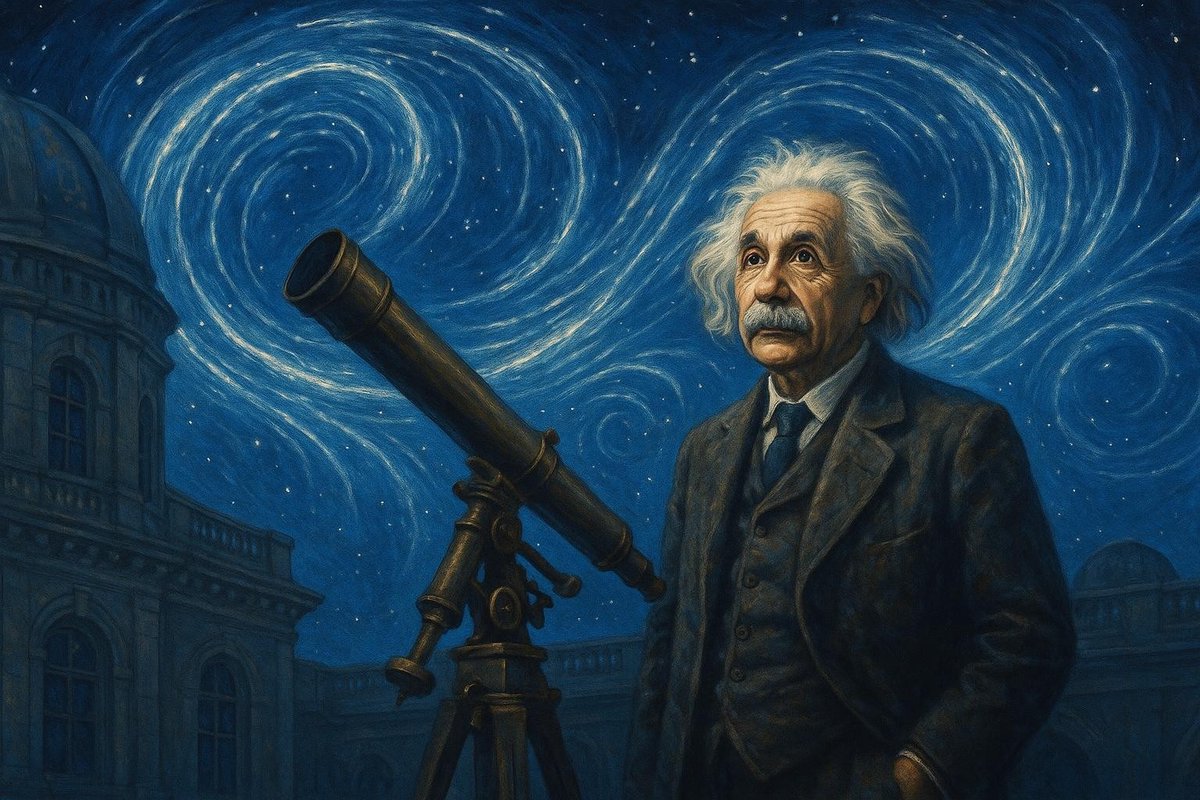
The Problem Context: Light’s Mystifying Path
Imagine standing on a sun-drenched shore, watching as light dances across the water’s surface, bending and refracting in mesmerizing patterns. Have you ever wondered why light behaves so playfully? Before Albert Einstein’s revolutionary ideas, many believed light traveled in a straight line, unburdened by the universe’s contours. Yet, this view left questions unanswered. Why did light seem to curve, like a melody shifting keys, when passing near massive celestial bodies?
- In the 1800s, Newtonian physics dominated, positing an immutable universe.
- Light was thought to travel in linear paths, much like trains on tracks.
- However, observations of starlight bending around the sun during eclipses suggested that something was amiss.
The world was ready for a new perspective, ripe for the kind of genius that could see beyond the visible. Enter Einstein, with a vision that transformed our understanding of both light and the universe itself.
Theoretical Breakthrough: Einstein’s Masterpiece
In 1915, Albert Einstein introduced his general theory of relativity, a conceptual symphony that harmonized space, time, and gravity. Like a composer bringing disparate notes into melody, Einstein proposed that mass warps the fabric of space-time, influencing everything within its realm—including light. He envisioned the universe as a grand stage where heavy objects warp the set, dictating the choreography of celestial bodies and light beams alike.
- Einstein’s theory unified space and time into a single continuum known as space-time.
- Massive objects, like stars, create curves in space-time, altering the path of light.
- This bending of light around massive objects is analogous to a symphony’s crescendo, where each note builds upon the last.
Einstein’s insight was revolutionary, revealing a universe not of fixed boundaries, but of dynamic interplay, where even light becomes part of nature’s grand composition.
Supporting Evidence: The Celestial Symphony
Einstein’s ideas, initially met with skepticism, found validation on May 29, 1919, during a total solar eclipse. British astronomer Sir Arthur Eddington led an expedition that observed starlight bending around the sun, confirming Einstein’s predictions. It was a moment where theory became reality, much like a musical piece brought to life in performance.
- Eddington’s expedition provided tangible proof of light bending due to massive gravitational fields.
- The results were both a scientific triumph and a cultural sensation, captivating a post-war world hungry for hope and understanding.
- Einstein’s fame soared, his ideas resonating beyond the academic realm into the public consciousness.
Just as music can evoke emotions and understanding, Einstein’s theory resonated with an innate human curiosity, forever altering how we perceive the cosmos.
Modern Relevance: The Endless Composition
As time goes on, Einstein’s theory remains foundational, influencing fields from cosmology to technology. It serves as a reminder that the universe, much like a symphony, is in a constant state of evolution and reinterpretation. GPS technology, for example, accounts for relativity to provide accurate positioning, a practical application of this elegant theory.
- Relativity continues to inform our understanding of black holes, gravitational waves, and the expanding universe.
- Technological advancements like GPS rely on relativistic calculations to function correctly.
- The theory inspires philosophical discussions about the nature of reality and our place within it.
Einstein’s work is a testament to the power of human imagination, a symphony that continues to play, inviting us to listen closely, learn, and explore.
Einstein’s legacy is a reminder that curiosity and creativity are as vital today as they were at the dawn of the 20th century. His vision encourages us to see the universe not simply as it is, but as it could be—a dance of light and time, forever in motion.
Fuel Someone Else’s Curiosity
If this exploration of light’s symphony and Einstein’s genius struck a chord with you, why not share the melody? Encourage others to ponder the harmonious dance of space and time. By exchanging ideas, we keep the spirit of discovery alive, a pursuit as timeless as the universe itself.

Leave a Reply